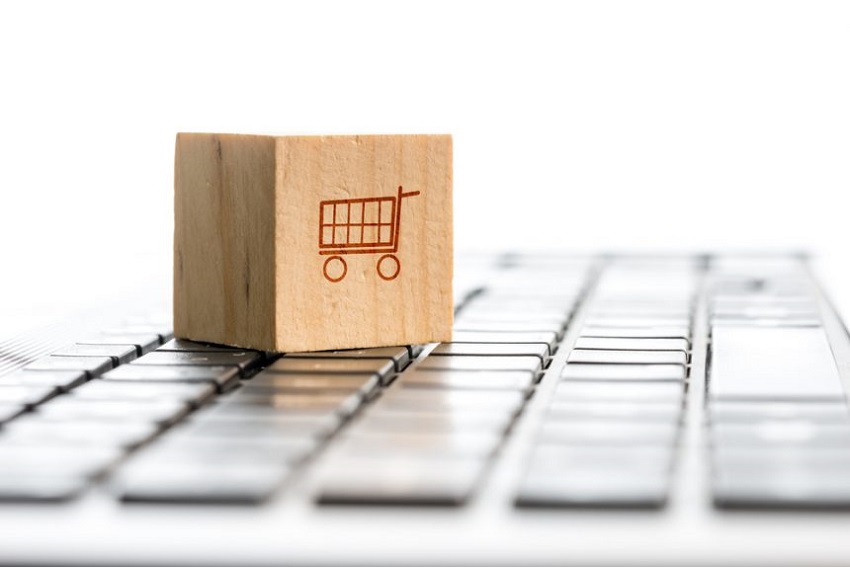The 4 Percent Of Club
The retail market in Iran is primarily dominated by the traditional market sector, with online stores and social networks accounting for only four percent of the total retail market share (as reported in the 1401(2022) Digikala annual report). The total retail market in Iran generates around $50 billion in revenue, of which only four percent represents online retail. This is in contrast to Turkey, where online retail accounts for approximately 20 percent of the market share, with an estimated five-year growth rate of about 14 percent. This suggests that the online retail market is expected to reach 34 percent by the year 2027.
According to IDEA, Although comparing the situations in Iran and Turkey in terms of online retail cannot be an accurate measure due to various reasons, including Iran’s larger geographical scope, the mere four percent share of online retail in relation to the total market indicates minimal growth in this market segment in the country, which has been ongoing for nearly 17 years.
The Iranian retail market exhibits a non-uniform distribution between electronic and traditional sectors. In other words, a small portion of the Iranian society’s shopping basket is supplied through e-commerce, while the majority of household shopping is done through direct communication with suppliers and customers. Nevertheless, the four percent share of online retail indicates a hidden potential within the market, which is only the tip of the iceberg.
Despite this, online retail, which has been steadily evolving over the years, has dedicated all its efforts to reaching the pinnacle and has no intention of moving toward the base of the mountain. In other words, their trajectory suggests that the coverage of e-commerce and social commerce in online retail has not reached various layers and segments of society, primarily focusing on specific cities and demographics. In simple terms, online retail in Iran has stagnated in recent years, and, according to the head of the Electronic Commerce Development Center, Iran’s e-commerce volume is lower than the regional average.
Electronic Commerce: Losing Ground to Inflation
In fact, if we examine the statistics of electronic commerce in the year 1401 – recently published by the Electronic Commerce Development Center – we see that electronic commerce has grown by over 48 percent in comparison to 1400. Initially, facing nearly 50 percent growth in electronic commerce in Iran might be intriguing, but the method of calculating the final figure raises doubts about this growth rate. The report on electronic commerce in 1401 shows that the nominal growth of electronic commerce has been close to 1,833 units. However, this amount is calculated without factoring in the inflation rate, and the effects of inflation on this figure are not clear.
This is while the latest report from the Statistical Center of Iran indicates that the annual inflation rate for consumer goods and services of households across the country, based on the 1400 base year, reached 45.8 percent in Esfand month of 1401. Accordingly, the nominal growth of 48 percent in electronic commerce in relation to the inflation rate of 45 percent implies a real growth of only three percent in this sector. In reality, the entire electronic commerce in Iran has experienced a three percent growth in 1401, which is disappointing when compared to the overall market volume. Although the inflationary effects have directly impacted various economic and social sectors, including the retail sector as a whole, the three percent growth in electronic commerce reveals the vulnerability of this sector.
Furthermore, in this report, the share of the total amount of goods and services in online purchasing transactions has been assessed at 27 and 73 percent, respectively, and the share of the number of goods and services is 9 and 91 percent, respectively. In essence, the majority of electronic commerce in 1401 was related to the services sector, with the goods sector representing only 27 percent of the total transaction amount. In other words, out of 1,833 units, only 678 units of electronic commerce are related to the goods sector, and alongside the calculation of the inflationary effects, we will witness a significant reduction in this number. Considering the significant focus of online retail on the goods sector, this number may shed light on the state of this sector.
The Numbers Stalemate
In this situation, expecting growth and development from the electronic commerce market is highly unlikely. Furthermore, the addition of new players to the electronic commerce market will also be fruitless, as the failure rate among participants in this field suggests that the bigger players, like the bigger ones, have managed to persist. In other words, the online retail market is full of failed players, small bankrupt stores, and those who remain fighting over just one percent of the total electronic commerce market. Digikala, with its one percent share, holds half of the electronic commerce market, while the remaining one percent is divided among the tenth percentile shares, as per the annual Digikala report. The one-percenters are fighting to maintain their one percent and sometimes also look towards the two-percent share in social commerce on social networks.
However, the sound of a new player’s footsteps can be heard in the current situation. In fact, Snapp’s focus on the supermarket and fast-moving consumer goods (FMCG) sector indicates that Snapp has targeted a significant portion of the online retail market. Snapp’s annual report also shows the highest growth in the supermarket sector, indicating the commercial group’s focus on occupying a significant place in people’s online shopping baskets.
Whether this strategy bears fruit or goes up in smoke remains to be seen, as Snapp took over Bamilo in 2018, which was certified as the second-largest online store in Iran after Digikala, and in 2019, Bamilo was closed, and its market was handed over to Snapp Express and Snapp Market. Nevertheless, the sound of a new competitor for Digikala can be heard, and the battle to gain a larger share of the market will likely be witnessed in the supermarket sector of Snapp.
Considering the current movements of the existing players in the online retail market, it seems that this market will ultimately be monopolized by players with two essential characteristics: extensive logistics and the ability to establish distribution centers (dark stores). This combination, along with increasing the range of services, increases competitiveness and ultimately sets the competitive rule in the market.
Electronic commerce has found meaning and significance in such a market, and the rules of the game in this field are also limited to numbers. These numbers have not been verified by the current electronic commerce market players, and their dispute has also revolved around these numbers. However, the two percent share of electronic commerce, with all its logistics and economic, social, and cultural backgrounds, will not increase significantly in the short term, and what defines the future of online retail, especially the electronic commerce sector, is the competition for the acquisition of one percent, which means a new bipolarity in the market and a reduction in the number of players.
The Filtering Puzzle and the Unofficial Players
However, on the other side of the online retail market, the unofficial players have stood their ground. These are the entities that offer goods and services through social networks and have garnered half of the online retail market in recent years: a two percent market with unclear players and unaccounted financial transactions. In fact, the two percent market of social commerce in Iran has managed to compete and maintain its position in the online retail market despite numerous obstacles. It’s better to say that social commerce is an irremovable entity from online retail.
In the fall of 1401 (2022), when filtering affected the two social networks WhatsApp and Instagram, concerns about a decline in electronic commerce increased. However, the e-commerce report for 1401 sheds light on changes in the index of goods and services offered on social networks, which is an interesting statistic regarding the use of these networks. In 1400, the most common method for offering goods and services was social networks with an 80 percent share, and in 1401, with a 40 percent share, social networks are still at the forefront of businesses and people’s use for offering goods and services.
In other words, despite the filtering of social networks, half of electronic commerce still thrives in this space, and online stores compete with social networks. These statistics show that, on the one hand, filtering couldn’t significantly impact this sector, and on the other hand, excluding social networks from online retail is not possible. This is because the e-commerce report indicates a three percent decrease in the share of domestic messaging apps compared to the previous year, with a 23 percent share in contrast to the 40 percent share, as well as a reduction in the share of telephone-based methods from 24 percent to 11 percent. All of these figures suggest that social commerce and unofficial marketplaces on social networks, even when filtered, continue to operate.
Despite all this, online retail has advanced parallel to its two edges, electronic commerce and social commerce, in recent years and has gained a portion of the retail market. However, the four percent share of this market indicates that this sector, in the face of numerous obstacles on its path, such as regulatory measures and the mandatory requirement for obtaining an e-commerce license, investment crises, people’s preference for in-person shopping, and technology unpreparedness, has managed to solidify its position in society and become one of the people’s choices when buying goods and services. In fact, if the global pandemic triggered an earthquake in the growth of e-commerce worldwide, in Iran, it also led to the acceptance of online retail among the people. However, filtering is a barrier that jumping over it requires considerable effort.





No Comment! Be the first one.